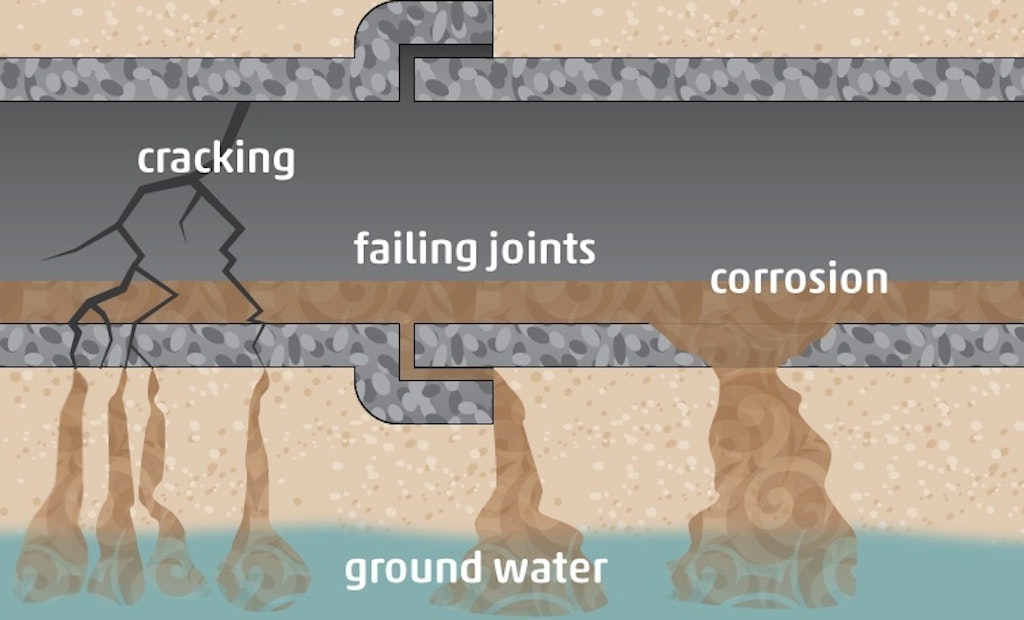Interested in Inspection?
Get Inspection articles, news and videos right in your inbox! Sign up now.
Inspection + Get AlertsExfiltration is the leakage of wastewater out of a sanitary sewer system through broken or damaged pipes and manholes. Wastewater that leaks out of defective pipe joints and cracks may contaminate ground and surface water and cause a host of other problems, including pipe structure failures due to erosion of soil support, and ground subsidence due to erosion of underground soil.
Untreated sewage from exfiltration often contains high levels of suspended solids, pathogenic microorganisms, toxic pollutants, floatables, oxygen-demanding organic compounds, oil and grease, and other pollutants. Sanitary sewer systems are designed to collect and transport wastewater to facilities for proper treatment before it is released back into the environment. However, exfiltration allows for the release of wastewater without proper treatment.
Exfiltration is a big problem facing water and wastewater infrastructure. Its effects can harm public health and the environment and necessitate costly repairs. A study done by the city of Albuquerque, New Mexico, staff estimated that their collection system lost 11 percent of wastewater due to exfiltration. A study done in England documented 20 to 25 percent of wastewater exiting the system through exfiltration. In another study, German wastewater professionals estimated a cost of nearly $100 billion to repair their deteriorated sewer infrastructure and combat exfiltration. Major points of exfiltration must be identified and repaired as a part of the regular maintenance of wastewater collection systems.
Identifying and correcting exfiltration
Flow monitoring, smoke testing and dye testing are used to detect and measure exfiltration problem areas within a collections system. Once problem areas are identified, municipalities can employ CCTV sewer inspection equipment to prioritize rehabilitation and quantify the severity of exfiltration.
A comprehensive approach to locating defects involves inspecting all aspects of a collections system, including manholes, sewer mains and laterals. Because laterals are the shallowest part of a sewer system and typically have the poorest construction, the EPA recommends that they be inspected while the sewer main is being inspected. A lateral launch system can be used to inspect both sewer mains and laterals at the same time. Leaking manholes are another source of exfiltration and can be inspected using a manhole scanning camera or pole camera.
There are many different rehabilitation technologies available to correct exfiltration sources. These methods include: chemical grouting, cement grouting, slip lining, cured-in-place pipe, fold and form pipe, pipe bursting, and point (spot) repair.
Regular inspection of sewer infrastructure can help identify exfiltration early so that steps can be taken to curb it and to repair the damage. Early detection of exfiltration can minimize the environmental impact and scope of remediation required. Check out Envirosight’s comprehensive resource page on exfiltration, inflow and infiltration now:
Visit the Envirosight Storefront






